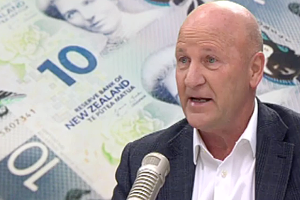By Tim O’Loan, Research Analyst, New Zealand Equities
Market shows promising reaction to central bank’s dovish pivot
After a long period of elevated interest rates, New Zealand’s equity market now stands at the beginning of a rate cutting cycle, with the Reserve Bank of New Zealand (RBNZ) having lowered the Official Cash Rate (OCR) at its last two monetary policy meetings. After hiking the OCR to 5.5% in May 2023 and then standing pat for over a year in order to curb inflation, the RBNZ started the cutting cycle with a 25-basis point reduction to 5.25% in August 2024. That was followed by a more substantial 50-basis point cut in October 2024, bringing the OCR to its current level of 4.75%. The RBNZ’s shift to a more dovish stance already appears to have buoyed New Zealand’s equities at this early stage of the cycle, with examples including signs of strength in the retirement village and rental sectors. The market as a whole has been delivering strong returns of late, with the S&P/NZX 50 Index of New Zealand’s largest companies by market capitalisation having risen by approximately 16% towards the end of October 2024 compared to about 12 months before. At the same time, data show that New Zealand’s consumers price index (CPI) eased to an annual rate of 2.2% in the September 2024 quarter¹, putting it only slightly above the mid-point of the RBNZ’s target range of 1-3%.
Lower interest rates and softer CPI seen favouring equities
We view both the lower OCR level and the softer CPI reading as signs of a more favourable environment for the stock market going forward. In our view, equities generally respond well to low interest rates for several reasons. The first of these is the lower cost of debt interest as it enables companies to get some relief on fixed debts as their debt rolls over. Secondly, given that consumers also benefit from relief on debt from lower rates, we feel that these cuts in the OCR are likely to make consumers more confident about spending. The third potential benefit is related to investment allocation decisions. We think that investors seeking yields are likelier to move their money out of low-risk vehicles such as term deposits and into dividend stocks when the OCR is on a downward trajectory. This is because lower interest rates tend to encourage investors to take on more risk in order to achieve similar levels of income. In our opinion, these factors are all likely to be positive for equities.
Outlook may be brightening following weakness of last reporting season
New Zealand’s last earnings reporting season, which occurred around August, reflected a low point in the economic cycle, with companies reporting weak results and some firms missing earningstargets. Even so, although the October ANZ Business Outlook survey² painted a picture of continued pain in some areas, it also provided signs of a brightening outlook. For example, companies reported depressed levels of business activity and employment, but forward-looking confidence indicators in the survey were brighter, with business confidence hitting a fresh 10-year high. In our view, this growing optimism is a product of New Zealand’s lower interest rate environment.
¹https://www.stats.govt.nz/information-releases/consumers-price-index-september-2024-quarter/
²https://www.anz.co.nz/about-us/economic-markets-research/business-outlook/
Important information: This document is prepared by Nikko Asset Management Co., Ltd. and/or its affiliates (Nikko AM) and is for distribution only under such circumstances as may be permitted by applicable laws. This document does not constitute personal investment advice or a personal recommendation and it does not consider in any way the objectives, financial situation or needs of any recipients. All recipients are recommended to consult with their independent tax, financial and legal advisers prior to any investment.
This document is for information purposes only and is not intended to be an offer, or a solicitation of an offer, to buy or sell any investments or participate in any trading strategy. Moreover, the information in this document will not affect Nikko AM’s investment strategy in any way. The information and opinions in this document have been derived from or reached from sources believed in good faith to be reliable but have not been independently verified. Nikko AM makes no guarantee, representation or warranty, express or implied, and accepts no responsibility or liability for the accuracy or completeness of this document. No reliance should be placed on any assumptions, forecasts, projections, estimates or prospects contained within this document. This document should not be regarded by recipients as a substitute for the exercise of their own judgment. Opinions stated in this document may change without notice.
In any investment, past performance is neither an indication nor guarantee of future performance and a loss of capital may occur. Estimates of future performance are based on assumptions that may not be realised. Investors should be able to withstand the loss of any principal investment. The mention of individual securities, sectors, regions or countries within this document does not imply a recommendation to buy or sell.
Nikko AM accepts no liability whatsoever for any loss or damage of any kind arising out of the use of all or any part of this document, provided that nothing herein excludes or restricts any liability of Nikko AM under applicable regulatory rules or requirements.
All information contained in this document is solely for the attention and use of the intended recipients. Any use beyond that intended by Nikko AM is strictly prohibited.





Comments
No comments yet.
Sign In to add your comment